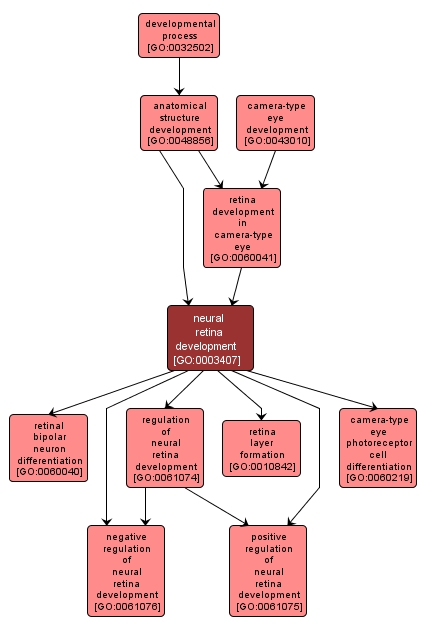GO TERM SUMMARY
|
| Name: |
neural retina development |
| Acc: |
GO:0003407 |
| Aspect: |
Biological Process |
| Desc: |
The progression of the neural retina over time from its initial formation to the mature structure. The neural retina is the part of the retina that contains neurons and photoreceptor cells. |
|

|
INTERACTIVE GO GRAPH
|














